Table of Contents
Choosing the right Point of Sale (POS) system is a critical decision for any retail business. It’s not just about managing transactions; a good POS system streamlines inventory management, customer engagement, and provides valuable insights through analytics. However, one of the key considerations when investing in a POS system is the cost. In the UK, the price of a retail POS system can vary widely based on several factors, including hardware, software, features, and the level of support provided. Let’s dive into the details of what you can expect to pay for a retail POS system in the UK.
Factors Affecting the Cost of a Retail POS System in the UK
Several elements influence the overall cost of a retail POS system. Here’s a breakdown of the primary factors that affect pricing:
- Hardware Requirements: The cost of hardware can vary significantly depending on the type and quality of devices you choose. Basic hardware typically includes a touchscreen monitor, receipt printer, barcode scanner, and cash drawer. Additional hardware like payment terminals or customer-facing displays will add to the overall cost.
- Software Fees: POS software costs are usually charged on a subscription basis, with prices varying depending on the features and capabilities of the software. Some providers offer one-time purchase options, but these can come with limitations such as reduced support or updates.
- Integration Capabilities: Integrating your POS system with other business software such as accounting tools, e-commerce platforms, or customer relationship management (CRM) systems can add to the cost. The more integrations you need, the higher the price.
- Customization and Additional Features: Retailers with specific needs may require customized solutions or additional features like advanced inventory management, loyalty programs, or multi-store management. Customizations often come with additional setup fees and higher ongoing costs.
- Support and Maintenance: Reliable customer support and maintenance services are crucial for keeping your POS system running smoothly. Providers may offer different levels of support—ranging from basic troubleshooting to full 24/7 support—affecting the total cost.
Typical Costs of POS Hardware in the UK
The hardware component is a significant part of the overall cost of a retail POS system. Here’s a look at the typical costs associated with POS hardware in the UK:
- Touchscreen Monitors: Prices for touchscreen monitors start at around £200 for basic models and can go up to £1,000 or more for high-end, all-in-one systems.
- Receipt Printers: Expect to pay between £100 and £400 for a receipt printer, depending on whether you opt for a basic model or a more advanced thermal printer with faster printing speeds and additional features.
- Barcode Scanners: Handheld barcode scanners range from £50 for basic models to £300 for advanced wireless or omnidirectional scanners.
- Cash Drawers: A standard cash drawer typically costs between £50 and £150, depending on the size, build quality, and additional security features.
- Payment Terminals: Payment terminals or card readers can add an additional £50 to £500 per device, depending on whether you need a basic card reader or a more advanced model that supports contactless and mobile payments.
POS Software Pricing in the UK
Software pricing can vary significantly based on the provider, features, and subscription model. Here are the typical costs for POS software in the UK:
- Basic Software Packages: Entry-level software packages that offer basic transaction processing and inventory management start at around £20 to £50 per month per terminal.
- Mid-Range Solutions: More advanced software that includes features like customer relationship management, employee scheduling, and detailed analytics usually ranges from £50 to £150 per month per terminal.
- Premium Software Packages: High-end software solutions with full-featured suites, including multi-location management, advanced reporting, and extensive integrations, can cost £150 to £300 or more per month per terminal.
Some providers also offer one-time purchase options for software, which typically range from £500 to £2,000 depending on the feature set and level of customization required.
Additional Costs to Consider
Beyond hardware and software, there are several other costs associated with setting up and maintaining a POS system:
- Installation and Setup: Professional installation and setup can cost between £200 and £1,000, depending on the complexity of the system and the level of customization required.
- Training: Training your staff to use the POS system effectively can incur additional costs, typically ranging from £100 to £500, depending on the size of your team and the provider’s training options.
- Ongoing Support and Maintenance: Support and maintenance fees can range from £20 to £100 per month, depending on the level of service and the provider’s policies.
- Transaction Fees: If your POS system includes payment processing, be aware of transaction fees. These are usually a percentage of each sale, often around 1% to 3%, depending on the payment processor.
How to Choose the Right POS System for Your Budget
When choosing a POS system, it’s essential to consider not just the upfront costs, but the total cost of ownership, including ongoing fees, support, and any additional features you may need as your business grows. Here are some tips to help you choose the right POS system within your budget:
- Assess Your Needs: Make a list of the essential features your business requires, such as inventory management, CRM, or e-commerce integration. Focus on providers that offer these features at a reasonable cost.
- Consider Scalability: Choose a POS system that can grow with your business. A system that is scalable will save you money in the long run by allowing you to add features and capabilities as needed, rather than requiring a complete overhaul.
- Compare Total Costs: Look beyond the initial purchase price and compare the total cost of ownership for each system, including hardware, software, support, and transaction fees.
- Read Reviews and Get Recommendations: Research different POS providers, read customer reviews, and ask for recommendations from other business owners in your industry. This can provide valuable insights into the reliability and cost-effectiveness of each system.
FAQs:
-
What is the average cost of a retail POS system in the UK?
The average cost of a retail POS system in the UK can range from £500 to £3,000 for a complete setup, including hardware and software. Ongoing costs for software subscriptions typically range from £20 to £150 per month per terminal, depending on the features required.
-
Do POS systems have hidden costs?
Yes, some POS systems may have hidden costs such as installation fees, training costs, ongoing support charges, transaction fees for payment processing, and additional costs for software updates or extra features. It’s important to review the provider’s pricing structure in detail to avoid unexpected expenses.
-
Is it better to buy or lease a POS system?
Buying a POS system involves a higher upfront cost but can be more cost-effective in the long run. Leasing, on the other hand, spreads the cost over time, which can be easier on your cash flow but may result in higher total costs due to interest or leasing fees. The best choice depends on your budget and financial strategy.
-
Can I use a POS system with my existing hardware?
Some POS systems are compatible with existing hardware, such as tablets, barcode scanners, and printers. However, compatibility depends on the POS software and the specific hardware you already have. Check with your POS provider to see if integration is possible or if new hardware is required.
-
How can I reduce the cost of a POS system?
To reduce costs, consider choosing a basic POS system with essential features and add-ons only as your business grows. You can also look for providers that offer bundle deals, negotiate for better terms, or choose a provider that offers low transaction fees. Leasing hardware or opting for refurbished equipment can also help reduce upfront costs.
-
Are there free POS systems available in the UK?
Yes, there are free POS systems available, but they often come with limitations such as basic features, limited customer support, or higher transaction fees. Free systems like Square offer no monthly fees but charge per transaction. These can be suitable for small businesses or startups with simple POS needs.
Conclusion
The cost of a retail POS system in the UK can vary widely depending on your business needs, the features you require, and the provider you choose. By understanding the key factors that influence pricing and carefully evaluating your options, you can find a POS system that meets your needs and fits your budget. Whether you’re a small boutique or a large multi-location retailer, investing in the right POS system can help you streamline operations, improve customer service, and ultimately drive business growth.

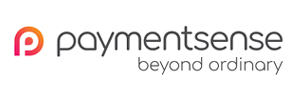
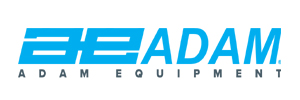




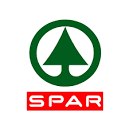
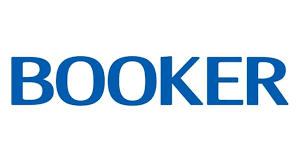
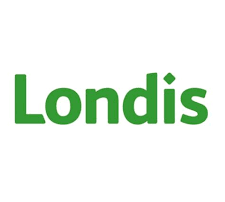


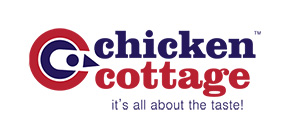

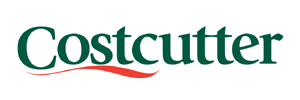
Software with direct link to Nisa has solved many hours of manual work. Best part is that GloPosNet support is always available to help.
Yogendra Nisa Local